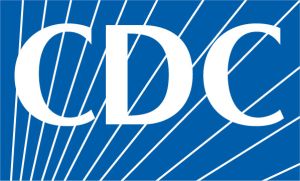States often provide their own funding or federal pass-through funding for social service and juvenile justice programs. Below are some examples and links to learn more.
Funding
About Opioid Settlement Funds
What are Opioid Settlement Funds?
On February 25, 2022, the National Prescription Opiate Litigation Plaintiffs’ Executive Committee (PEC) finalized settlements totaling $26 billion with three of the nation’s top wholesale pharmaceutical drug distributors, in which fifty-two states and territories and thousands of local governments across the country will receive funds for current and future opioid remediation. Approximately $29 billion in additional settlements with opioid manufacturers and retailers is forthcoming.
Several Dibble clients have received Opiod Settlement funds from their states to use our materials, Mind Matters in particular, to prevent and mitigate the use and impact of opiods in teens and young adults.
What entity will receive funds?
Each state has its own internal agreement on how to split the funds between local governments (cities and counties) and the state.
Here’s a state-by-state guide to the opiod settlement funds.
How will funds be used?
Under the master opioid settlement agreement, the majority of funds from the settlement must be used for current and future opioid remediation.
More resources:
Check out this Opioid Settlement Grant tracker here.
Title II State Formula Grants
Authorized by the JJDPA, Title II supports innovative state efforts to adhere to standards that reduce the risk of harm to court-involved youth, ensure fair treatment of minority youth, improve the way systems address delinquent behavior, and ensure citizen involvement and expertise through the State Advisory Groups (SAGs).
Learn more here.
Title V Local Delinquency Prevention Program
Authorized by the JJDPA, Title V is the original, and still one of the only, federal programs specifically designed to prevent delinquency at the local level. To ensure a solid return on investment, the Title V program prioritizes the use of evidence-based approaches, requires the creation of a local policy board (“Promise Councils”) to engage in the development of prevention programming to ensure the unmet needs of at-risk youth, and leverages the commitment and resources of state and local jurisdictions by requiring that the state and local applicant provide a 50% match. 11% of funding under Title V must be awarded to Indian Tribes to be used for tribal juvenile delinquency prevention services and to care for at-risk or delinquent youth upon release.

For information on the RPE Program’s current program activities and state contact information, click here!
About Rape Prevention and Education Programs
What is the RPE Program?
The RPE program’s focus is to prevent sexual violence by providing funding to state and territorial health departments in all 50 states, the District of Columbia, Puerto Rico, and the U.S. Virgin Islands, and state, territorial, and tribal sexual assault coalitions.
The RPE program is authorized through the Violence Against Women Act, passed by Congress in 1994 and most recently authorized in 2022. In 2016, CDC received additional funding to support program evaluation research on programs implemented through RPE.
What states are eligible?
In order to be eligible for RPE funds, the CDC must approve or certify the state sexual assault coalition. Click here to find out if your state has an approved coalition.
Who can I contact?
The Rape Prevention and Education Program operates in all 50 states, the District of Columbia, Puerto Rico, and the U.S. Virgin Islands. Profile information of your state or U.S. Territorial contacts can also be found here.
More resources:
National Sexual Violence Resource Center (NSVRC)
Directory of Organizations (NSVRC)



